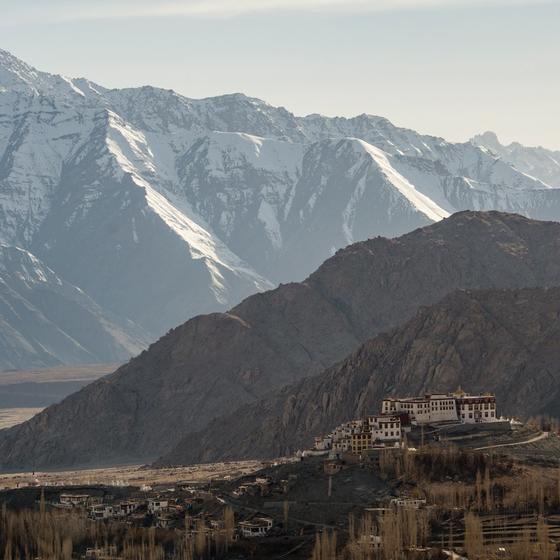Food writer Romy Gill returns to the Punjabi city of Amritsar to revisit the street-food stalls and temple kitchens of her childhood
18 October, 2022
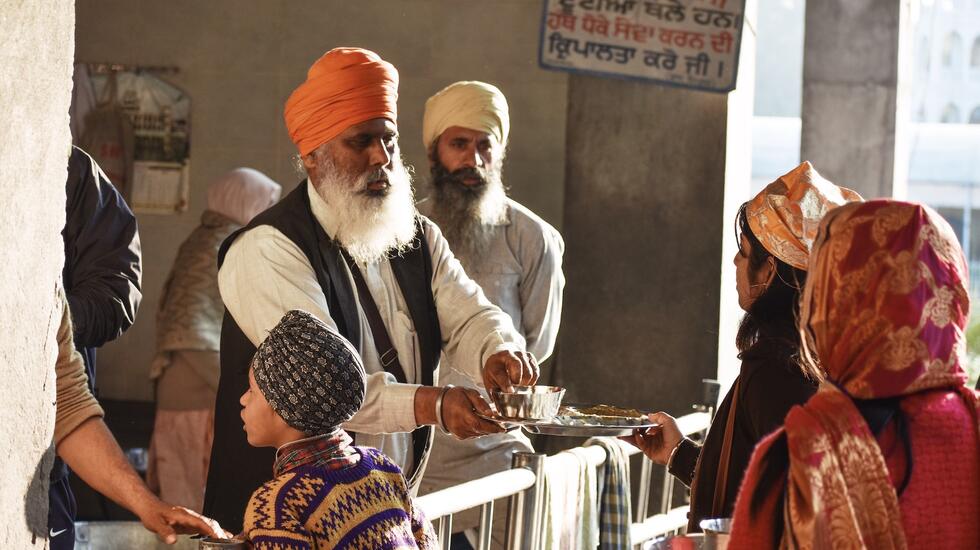
Read more delicious stories in Volume 38: Flavour.
Punjab
is a region that’s deeply rooted within me. At a very
young age, my father moved from Punjab to West Bengal to work in a
steel plant; my mum followed, making the same journey shortly after
their marriage.
During my childhood, our holidays were spent taking the train
back to their home region, where we would visit both sides of the
family. With money tight, my parents saved every penny they could
to make sure we were able to travel. I remember long, hot,
memory-filled summers spent with my cousins and friends, connecting
as if we had never been apart.
Every time we visited, my grandmother made a point of taking us
to the nearby city of Amritsar. Sometimes we were happy to go,
sometimes we tried to change her mind. It wasn’t that we didn’t
enjoy it – we just resented having to change buses to get
there.
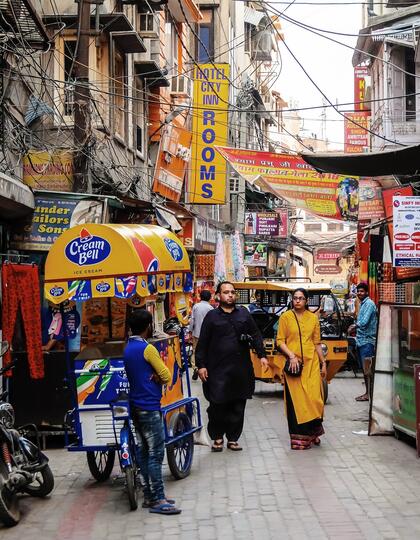
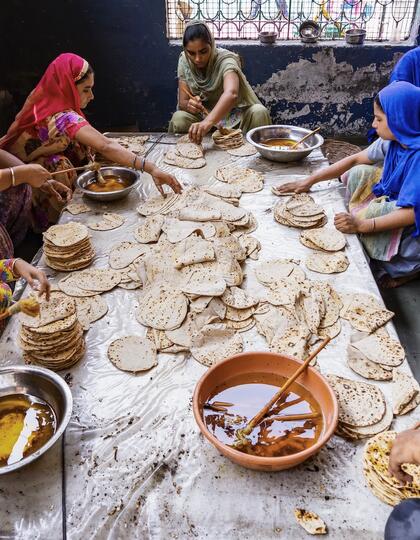
Amristar streets, left, and a group of women making bread. |
Photo credit: Denis Vostrikov / Shutterstock.com
Amritsar is Punjab’s second-largest city, and it’s steeped in
history and heartache. The partition of India in 1947 divided
Punjab into West and East and also saw the formation of Pakistan,
dividing millions of people across the country along religious
lines and displacing them across geographical ones.
With the partition came borders. The two large gates of the
Wagah border, connecting India and Pakistan, are just 32km from
Amritsar. Today, people travel from far and wide to visit this
crossing where, since 1959, both India’s Border Security Force and
Pakistan’s Rangers carry out an elaborate dance-like military drill
each day, signifying both rivalry and brotherhood between the two
countries. It’s a sight to behold, with both troop groups dressed
in full military attire. In the evenings, they perform the Beating
Retreat ceremony, during which the gates are opened, the flags on
both sides are lowered and folded, and the soldiers from both
countries shake hands, before re-closing the gates.
That’s not where we headed to, though, on our trips to the city.
My grandmother took us to the Golden Temple, an incredible Sikh
gurdwara that is built lower than ground level to symbolise
humility. This incredible building has four different entrances,
all on different sides, to symbolise the Sikh belief that people
from all walks of life are welcome in the temple. It’s somewhere to
seek spiritual comfort, no matter your beliefs. It’s a sacred place
and my grandmother liked to take us there to pay our respects. For
me, though, the food was more enticing.
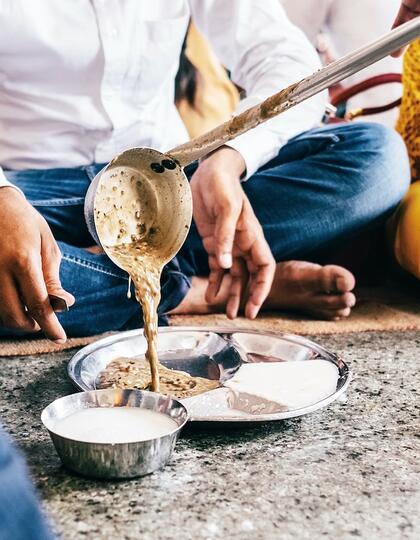
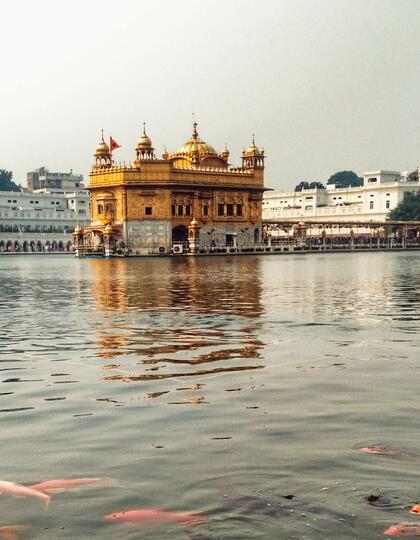
Food at Golden Kitchen Temple, left, and a snapshot of the
Golden Temple. | Photo credit: Preerna Sharma /
Unsplash.com
After offering prayers, you were (and still are) able to try the
temple’s kara prasad, a type of halwa made with wholewheat flour,
ghee and sugar. If offered, you cannot say no: some Sikhs may take
refusal as an insult.
Every Sikh gurdwara offers free langars, too. These are hot
meals for all those passing through their doors. At the Golden
Temple, the langar hits majestic levels. The Amritsar temple has
one of the largest free kitchens in the world, serving up to
100,000 people each day. It’s been doing this since 1577.
The volunteers in the kitchen serve between 50,000 and 100,000
meals over the course of a day, normally consisting of rotis, rice,
daal, a sabzi (vegetable dish) and kheer. It may be a simple meal,
but it’s an incredible experience.
Heartache is never far in Amritsar, though. Just a five-minute
walk from the Golden Temple is Jallianwala Bagh, a memorial garden,
museum and gallery that honours those killed in a massacre at the
site in April 1919. A crowd of 20,000 had gathered in peaceful
protest against Mahatma Gandhi being refused entry to Punjab,
unaware that earlier that day, Brigadier General Dyer had banned
all processions and congregations of more than four people. In
response to the gathering, Dyer had all exits blocked and ordered
his troops to shoot at the crowd. The event became a decisive step
towards the end of British rule in India.
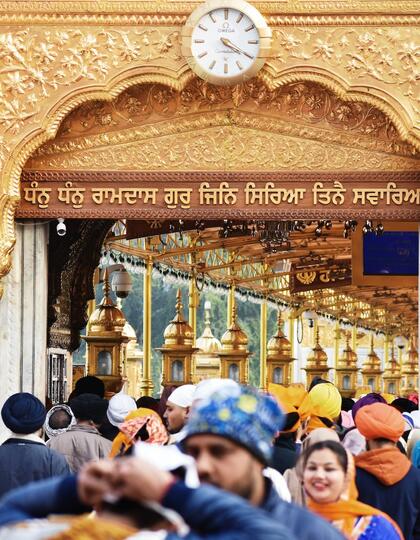
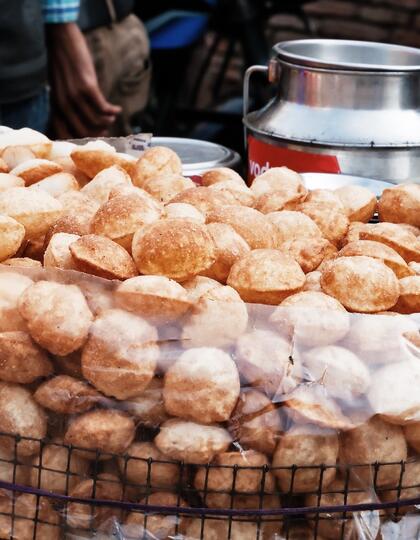
Crowds at the Golden Temple, left, and street food. Photo
credit: Tingling1 / Shuttertstock.com / Unsplash.com
Our family missions tended to be in the streets around the
museum, home to street-food stalls and hole-in-the-wall joints.
Many are still there today. There’s Rang Punjab, tucked into the
heritage centre complex, just across the street from the museum.
Last time I visited, I had a breakfast thali of kulcha flatbread,
chickpeas in a spicy gravy topped with onions and tamarind chutney,
aloo sabzi (dry spiced potatoes) gur ka halwa (a rich, sweet
confectionery), lassi and chai.
A 10-minute walk west (or quick rickshaw trip away), you’ll find
Kesar Da Dhaba, in an old part of Amritsar near the telephone
exchange. Founded way back in 1916 in Sheikhupura, Pakistan, this
vegetarian restaurant reopened in the city after partition. Its
signature dish is the slow-cooked maa ki dal (whole black gram
lentils) – perfect for scooping up with flaky, wholewheat lachha
paratha.
For something sweet, head north to A One Kulfa in Crystal Chowk,
INA Colony, to enjoy a layer of phirni rice pudding topped with
scoops of falooda (a rose-scented vermicelli-based dessert) and
kulfi (the Indian equivalent of ice cream), plus a dash of rose
water and rabri (spiced, thickened cream). Be warned: eat one of
these and you won’t need anything else for hours.
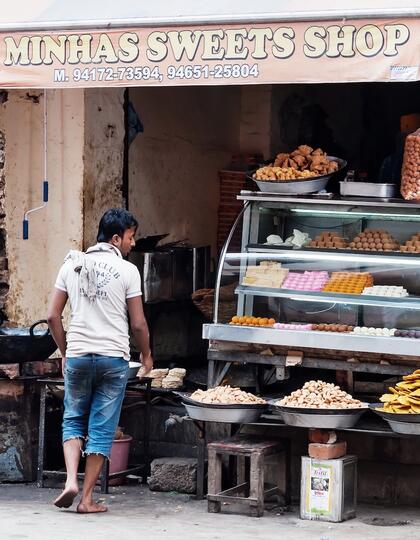
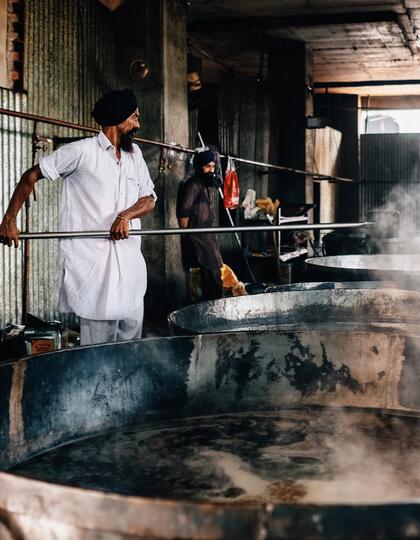
An Amristar street food shop, left, and a look inside the
Temple Kitchen. | Photo credit: Elena Odareeva & Soloviova
Liudmyl / Shutterstock.com
Amritsar is most famed for its kulcha. These soft, round
leavened breads are stuffed with either spicy potatoes or paneer,
before being baked in the tandoor until crispy, then drenched with
ghee and served with chole (chickpeas), onions and tamarind
chutney. It’s one of my dad’s favourite meals – something he’d
always seek out on our trips to Amritsar. You can enjoy kulcha for
breakfast or lunch; for some of the city’s best, try Kulcha Land at
the District Shopping Centre on Ranjit Avenue.
To me, Amritsar is a food city, even if that’s not why my
grandmother took us there. When you’ve had your fill of street
eats, don’t forget about Amritsari fish tikkas. Chunks of fish are
coated in gram flour and spices and fried, creating a perfect
balance of spice and heat. As a child, my favourite place to eat
this was at the Makhan Fish and Chicken Corner. Open since 1962,
it’s still going strong, offering an authentic version of the
city’s favourite tikka.
I visited Amritsar again recently, this time with my dad,
tasting kulcha and chole, and visiting the kitchen at the Golden
Temple. It reminded me of when I was just a young girl, holding his
hand and acting like a big girl, holding a chuni (shawl) over my
head. This time, though, it was he who held my hand, with me making
sure he was constantly by my side. It gave me a great deal of
happiness.
Discover more stories from the Flavour issue here.
